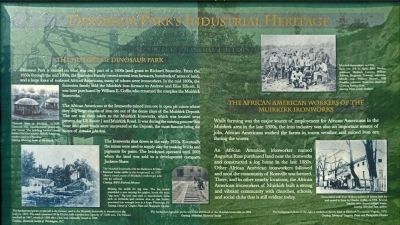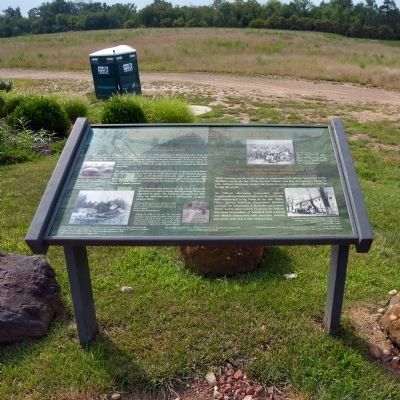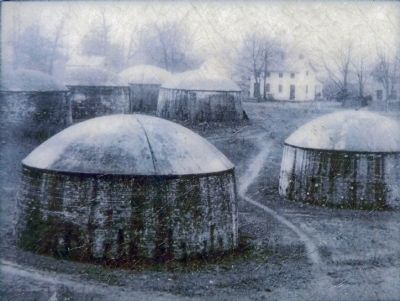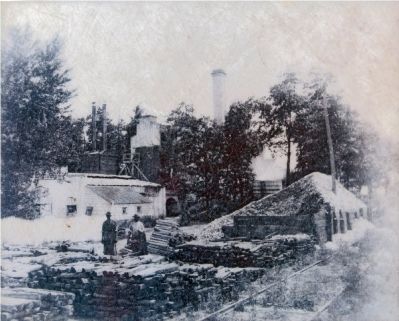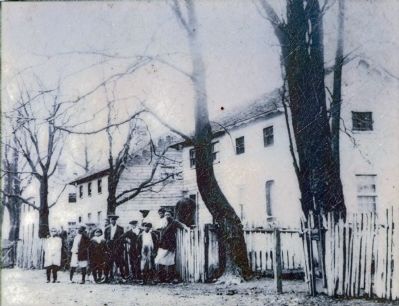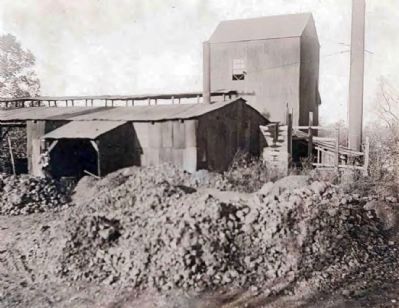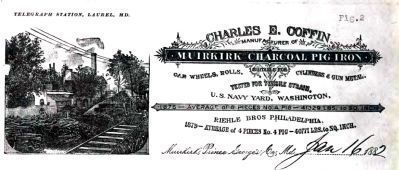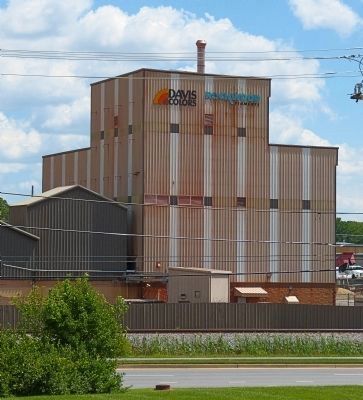Laurel in Prince George's County, Maryland — The American Northeast (Mid-Atlantic)
Dinosaur Park's Industrial Heritage
The History of Dinosaur Park
Dinosaur Park is located on what was once part of a 1600s land grant to Richard Snowden. From the 1650s through the mid 1800s, the Snowden Family owned several iron furnaces, hundreds of acres of land, and a large force of enslaved African Americans, many of whom were ironworkers. In the mid 1800s, the Snowden family sold the Muirkirk iron furnace to Andrew and Elias Ellicott. It was later purchased by William E. Coffin who renamed the complex the Muirkirk Ironworks.
The African Americans at the Ironworks mined iron ore in open pit mines where they dug large chunks of iron ore out of the dense clays of the Muirkirk Deposit. The ore was then taken to the Muirkirk Ironworks, which was located near present day US Route 1 and Muirkirk Road. It was during the mining process that bone and plant fossils were uncovered at the Deposit, the most famous being the bones of Astrodon johnstoni.
The Ironworks shut down in the early 1920s. Eventually the mines were used to supply clay for making bricks and pigments for paint. The brickyard operated until 2005 when the land was sold to a development company, Jackson-Shaw.
The African American Workers of the Muirkirk Ironworks
While farming was the major source of employment for African Americans in the Muirkirk area in the late 1800s, the iron industry was also an important source jobs. African Americans worked the farms in warm weather and mined ore during the winter.
An African American ironworker named Augustus Ross purchased land near the ironworks and constructed a log home in the late 1880s. Other African American ironworkers followed and soon the community of Rossville was formed. There, and in other nearby locations, the African American ironworkers of Muirkirk build a strong and vibrant community with churches, schools, and social clubs that is still evident today.
Erected by Maryland-National Capital Parks and Planning Commission.
Topics. This historical marker is listed in these topic lists: African Americans • Colonial Era • Industry & Commerce. A significant historical year for this entry is 2005.
Location. This marker has been replaced by another marker nearby. It was located near 39° 4.253′ N, 76° 52.122′ W. Marker was in Laurel, Maryland, in Prince George's County. Marker could be reached from Mid Atlantic Boulevard, 0.4 miles south of Contee Road when traveling west. The marker stood in Dinosaur Park. Touch for map. Marker was at or near this postal address: 13100 Mid Atlantic Blvd, Laurel MD 20708, United States of America. Touch for directions.
Other nearby markers. At least 8 other markers are within walking distance of this location. Welcome to Dinosaur Park (here, next to this marker); Meet Astrodon johnstoni (a few steps from this marker); The Dinosaurs of Dinosaur Park (a few steps from this marker); The Industrial Heritage of Dinosaur Park (a few steps from this marker); a different marker also named Welcome to Dinosaur Park (a few steps from this marker); George Washington Carver (approx. 0.4 miles away); Veterans Memorial (approx. 0.4 miles away); Three Sisters: Close Knit Communities of the Laurel Area (approx. 0.8 miles away). Touch for a list and map of all markers in Laurel.
Related marker. Click here for another marker that is related to this marker. This marker has been replaced by the linked marker.
Additional commentary.
1. Muirkirk
The WPA guide Maryland, a Guide to the Old Line State published in 1940 described Muirkirk this way:
Muirkirk -- 23.4 m. {from Baltimore on Rt. 1} (170 alt. 200 pop.) was named for Muirkirk, Scotland, by Scots who in 1747 built an iron furnace here. Six of the beehive-shaped brick charcoal ovens are still standing { in 1940.} Because Muirkirk iron had greater strength, the plant outlasted most of the others that utilize Maryland ore and it supplied cannon and cannon balls to the Federal
Army during the Civil War and later began the production of gun carriages and car wheels. Razed by an explosion in 1880, the plant was immediately rebuilt. About the time of the World War Muirkirk turned to the production of ochre from local ores but since 1924 has provided pigments from higher grade foreign ores.
— Submitted August 4, 2013, by Allen C. Browne of Silver Spring, Maryland.
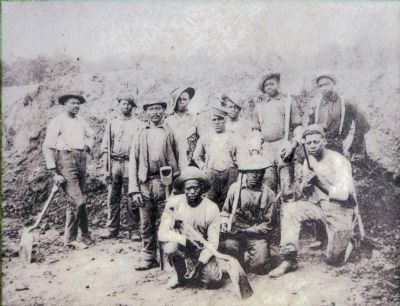
Photographed By Allen C. Browne, July 28, 2013
5. Muirkirk ironworkers, ca. 1920.
Back row (left to right): John Weems, unknown, Meshach Conway, William Tolliver, Benjamin Conway, unknown, Middle row: William Stewart, Will Franklin, unknown, unknown. Front row: Shadrach Conway, Reason Ross. Close-up of photo on marker
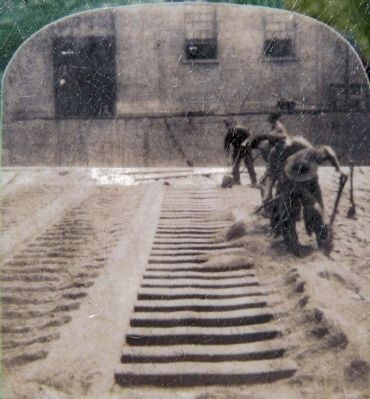
Photographed By Allen C. Browne, July 28, 2013
7. Making Molds for Pig Iron
The bar molds resembled a sow nursing her piglets, hence the term "pig iron." Pig iron was used to manufacture items such as firebacks and cannon shot or was further processed into wrought iron at a forge. Pittsburg PAClose-up of photo on marker
Credits. This page was last revised on December 11, 2021. It was originally submitted on August 3, 2013, by Allen C. Browne of Silver Spring, Maryland. This page has been viewed 790 times since then and 24 times this year. Photos: 1, 2, 3, 4, 5, 6, 7, 8, 9. submitted on August 3, 2013, by Allen C. Browne of Silver Spring, Maryland. 10. submitted on August 5, 2013, by Allen C. Browne of Silver Spring, Maryland. • Bill Pfingsten was the editor who published this page.
